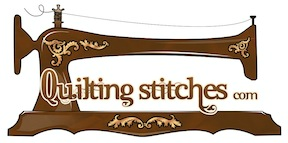When you have finished your quilt and lay it out to take pictures do you notice that it doesn't lay flat?
Or it does lay flat but it's not square?
Some people don't even care but this is a dillema that makes the next step really tricky to repair. Your longarmer wants to make a sandwich but the bread isn't straight...
Alternately the bread is straight but there a lumps that when the threads start to tighten under the sewing machine, the puckers become even more evident and sometimes to the point that they are unmanageable...
This all comes down to fact that fabric will stretch one or both directions and after piecing any inaccuracies become compounded . Once a border is applied to make the quilt somewhat square, the fabric has to go somewhere and the "puckering" makes the final quilting a challenge. The end result will show up as areas of excess fabric that must be folded and sewn under if the fabric cannot be shrunk. Longarm quilters have a bunch of tricks and techniques learnt over the years but the folding under is a must if the quilt piecer is not prepared to re-do the top piecing.
First and foremost BEFORE you cut, starch your yardage. You don't need to use really expensive starch, the kind you find in a spray can at your local store (no cornstarch please-that's a whole other can of worms ( or bugs in this case!) is all you need. Thoroughly saturate it but not to the point that it is dripping & let it dry over night. Then press before cutting out as directed in the pattern. This extra step will help keep it as rigid as possible while sewing into a quilt top & result in a square quilt top.
Squaring a Quilt
1. Once you get your quilt back from your longarmer, set your machine to a zig-zag stitch that is small in width but long in stitch length. Stitch around the entire perimeter of your quilt, through all three layers. This essentially turns your quilt a solid piece of fabric, reducing the potential for movement when you attach your binding.
2. With your quilt supported on the table (if it hangs over the weight may pull you out of square as you cut) get ready to cut. The whole quilt doesn't have to lay flat, so don't worry about having a giant table. As long as your cutting edge and about 12-20 inches to the side of that edge stays flat.
3. Start in one corner. Line up the corner of the quilt top with the corner of the ruler, a quarter inch in from the edge. This is where the actual process of squaring begins. From the corner you will want to keep the quarter inch markings in line with your quilt top's edge. To do this you may need to pull the quilt into square. Hold the ruler down firmly but not so hard that you can't pull the fabric with your cutting hand. Pull the quilt, holding on to the batting and backing fabric until it is in line with the quarter in marks. You may have to pull the inside of the quilt in, rather than the edge out. Just go slow and pull as necessary. When you have it lined up with your ruler, cut it for the length of the ruler only. From the first cut, move your ruler up. Overlap up the cut edge by a few inches with the ruler, keeping the cut edge and the ruler's edge in line together. Then line-up your quilt top's edge with the quarter inch mark. As you finish one cut, move the ruler up the edge of the quilt (keeping the quilt on your cutting mat). Constantly realign the quilt top's edge with that quarter inch mark. Pull the fabric as necessary to bring the quilt top's edge into alignment. Always hold the ruler firmly as you cut. Continue around the edge of the quilt until you get to the next corner.
4. When you get to the corners ensure your quilt top edge lines up in the same way as the edge you are currently cutting. In other words, you should be cutting your vertical edge, As you approach the corner - at least 8 inches out - line up your ruler on the current corner as you did the first one. Square your top, or horizontal, edge by pulling into alignment prior to finishing the vertical cuts. Cut both sides of the corner at the same time.
Turn the quilt and continue around all edges and corners.

